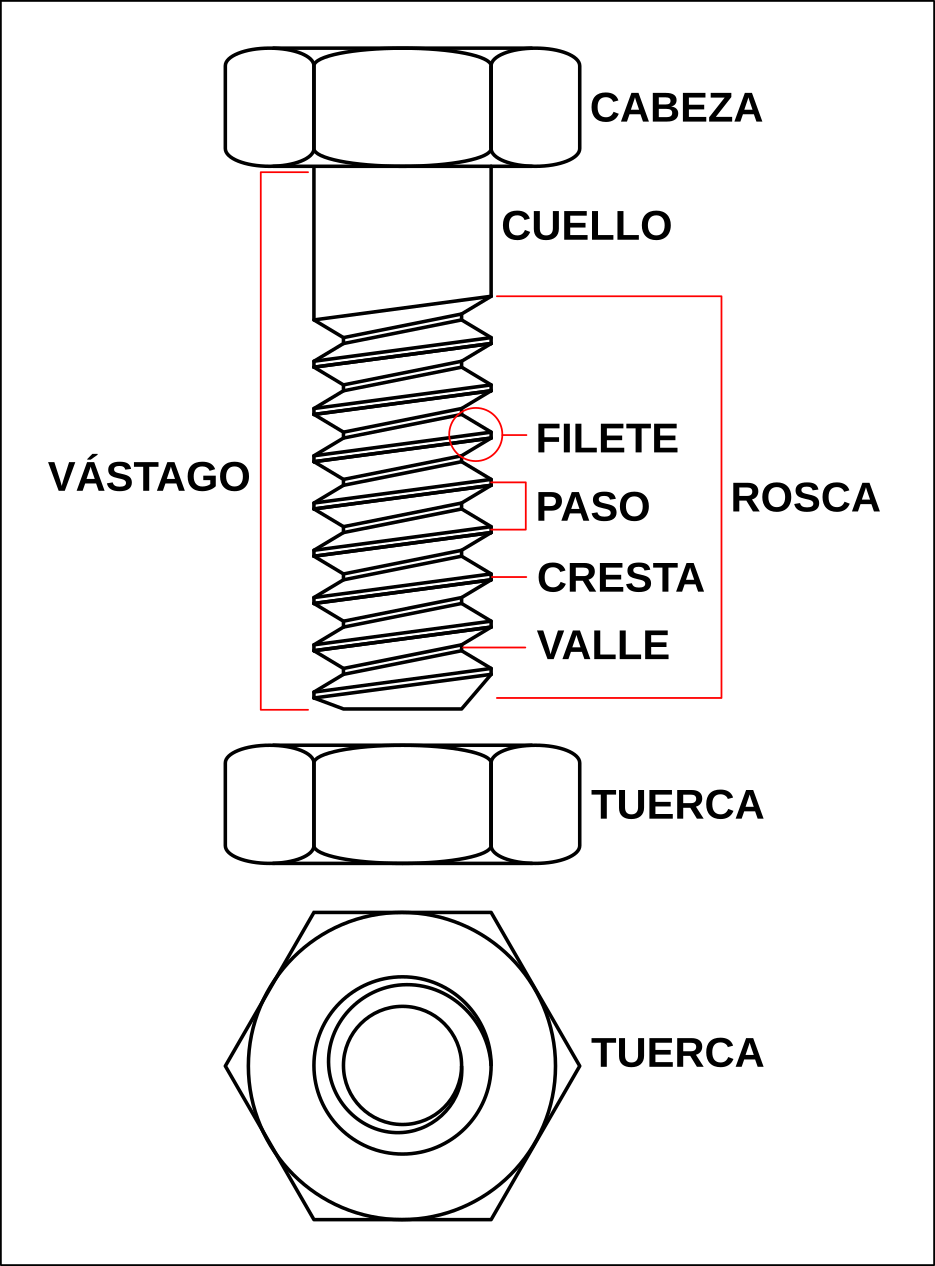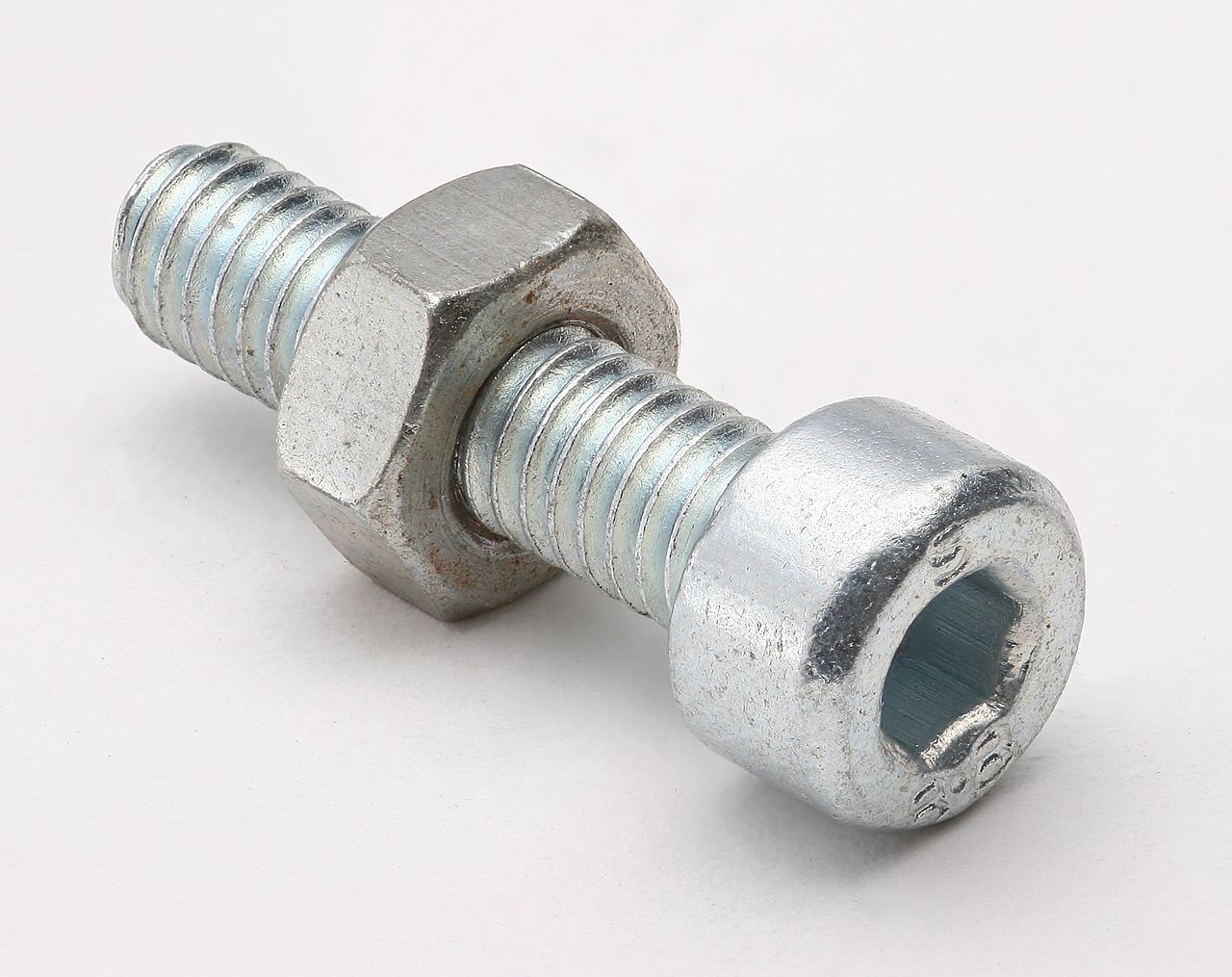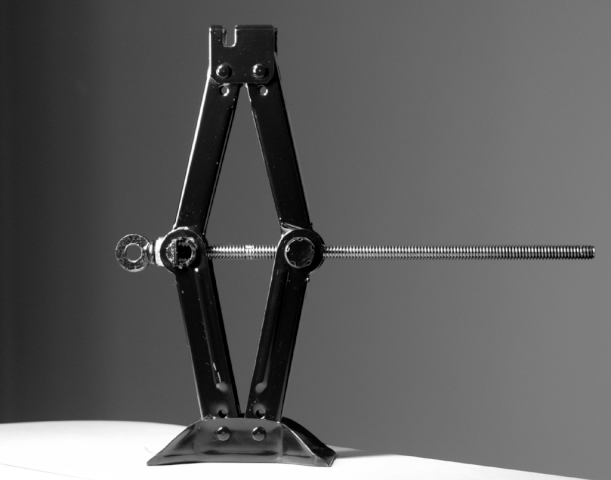Screws¶
A screw is a simple machine formed by an inclined plane that is wound around a cylindrical axis.
Parts of a screw¶
The denomination of the different parts of the screw is as follows.
- Stem
- Cylindrical part of the screw where the grooves of the thread are carved.
- Neck
- Uncut part of the screw shank.
- Thread
- It is the inclined plane wound helically around the stem.
- Screw head
- It is the extreme part of the screw, used to turn the thread. It is usually square or hexagonal in large screws.
- Fillet
- It is the protruding part of the groove of the thread.
- Passed
- It is the distance between two consecutive crests of the thread.
- Nut
- It is a mechanical part with a threaded hole that is attached to the screw. The nut usually has a square or hexagonal shape to facilitate its turning using torque wrenches.

Parts of a bolt and hex nut.¶
Screw Applications¶
- Uniones desmontables
One of the applications of screws is to make removable joints.
Por ejemplo la carcasa de un ordenador está unida con tornillos.
- Mecanismos que avanzan con precisión
Los tornillos permiten realizar movimientos de mucha precisión.
Por ejemplo un tornillo de un grifo giratorio permite abrir el paso de agua con mucha precisión. Otro ejemplo son las sillas a tornillo que se pueden subir o bajar con precisión dando vueltas al asiento.
- Mecanismos para mover con fuerza
Otra gran aplicación de los tornillos es construir mecanismos que avanzan con mucha fuerza.
For example, the mechanism of a mechanical car jack is based on ascrew that moves a pair of scissors.
Bolt calculation¶
The parameters of a screw are its pitch or distance between two threads, the number of turns of rotation and the linear feed that is achieved when turning. The formula relating these variables is as follows.
Being
Feed = linear distance traveled by the screw in millimeters
Turn = number of turns the screw turns
Pitch = distance the screw advances for each turn it rotate
Both the Feed and the Pitch must be expressed in the same units of distance.
Exercise chair¶
A workshop chair is raised by means of a screw with a thread pitch equal to 4 millimeters per turn. If we want to raise the chair 6 centimeters, how many turns will it be necessary to give the screw?
To solve the problem, we first write down the data we have, converting all the distances to the same unit.
Next we write the formula and substitute the known quantities.
Finally, we clear the unknown to find the result.
Exercise vise¶
A vise opens a distance of 12 centimeters after turning the crank a total of 24 turns. What is the pitch of the screw?
To solve the problem, we first write down the data we have, converting all the distances to the same unit.
Next we write the formula and substitute the known quantities.
Finally, we clear the unknown to find the result.
Microscope screw exercise¶
A microscope has a screw to raise and lower the stage and be able to correctly focus the object to be viewed. If the pitch of the screw is 0.5 millimeters and we make a turn of 16 turns, how much will the plate advance?
To solve the problem, we first write down the data we have, converting all the distances to the same unit.
Next we write the formula and substitute the known quantities.
To finish, it is not necessary to clear and we can directly calculate the result.

